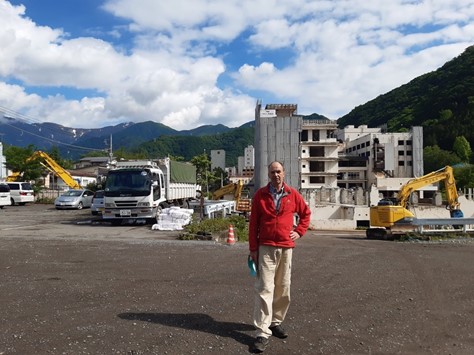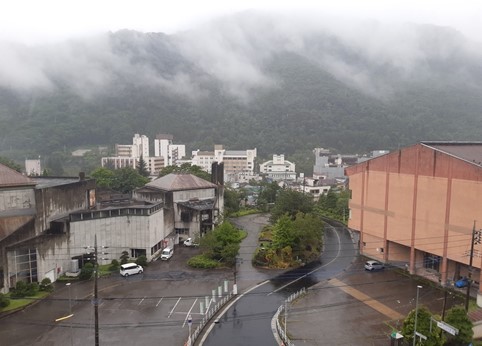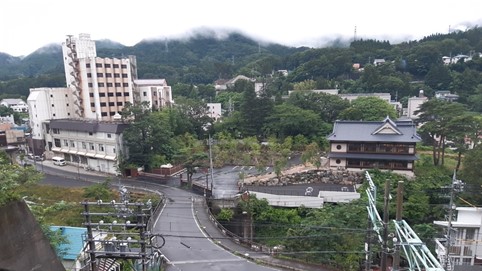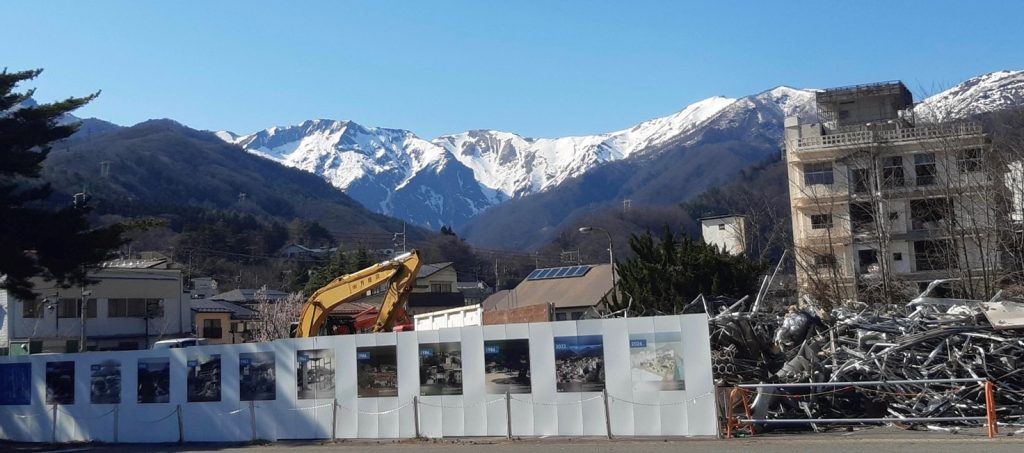by Arne Bartzsch
In 2021, the municipality of Minakami in central Japan has signed an agreement for a joint project of machizukuri (community planning) with a real estate company (Open House Group), a financial institution (Gunma-Bank), and a university (Tokyo University). This cooperation of business, administration, academia and finance (sankangakukin) has gained attention as a notable example of machizukuri in Japan. General topic is the revitalization of the central spa resort area, Minakami Onsen, with the project’s actual focus on the Yubara district. This project illustrates characteristics of Japanese resort towns and collaborative approaches to tackle their specific problems. In summer 2024, with the project’s planning and execution in full progress, I had the opportunity for extensive on-site research in Minakami. I participated in activities and talked to responsible persons and many citizens. Since I lived in Minakami Onsen for a couple of years, I was able to make sense of these developments to some extent. Certainly, it would need more in-depth research to get a proper understanding, especially about the formal planning process. However, I was able to gain valuable insight into realities of contemporary machizukuri in Japan. In the following, I would like to introduce Minakami and the problems the town has been facing in the past decades before I describe Minakami’s machizukuri activities in my next post.

Copyright © Arne Bartzsch 2024
Minakami is located 175 km from central Tokyo in the north-western corner of the Kantō-region, in Gunma prefecture. Only tunnels for railways and highway, plus a single state road lead to Niigata on the other side of the 2000 m high mountain ridge. Widespread natural forests serve as the source of Japan’s longest river, the Tone. Several dams collect water for Tokyo and the Kantō area, and the whitewater rivers provide tourist attractions. In winter, clouds from Niigata leave behind vast amounts of snow. In 2017, the area was designated as the Minakami UNESCO Eco Park. And there are a large number of onsen. Onsen (hot springs) are plentiful in Japan. Many have been developed into resort-spots, attracting people for wellness and tourism or for business and work. Onsen-gai (-streets) or onsen-machi (-towns) have a typical structure, determined by specific architecture, infrastructure and social composition. Often situated in genuine natural environment and depending on a rather uniform economy (tourism, wellness), an onsen-gai or onsen-machi forms a characteristic urban space. Minakami Onsen is such an urban space.

Copyright © Arne Bartzsch 2024
The name Minakami Onsen originally has been a synonym for Yubara (“field of hot water”), the central district of old Minakami, before its merger with its former neighboring communities Niiharu and Tsukiyono in 2005. After the merger the name accentuated the old Minakami, in contrast to the enhanced town of new Minakami. However, present local planning and promotion seem to tend to the original use, and I am following here in accordance. While all parts of Minakami (new) have several onsen, Minakami Onsen (Yubara) has the most prominent onsen-gai. Here, the building density is comparatively high, with large-scale hotels, guesthouses, commercial facilities and residential houses. The railway station and a touristic local shopping facility (michi no eki) are in close distance, and almost integrated parts. Contrasting the built environment, the Tone River cuts through a scenic gorge alongside Yubara, and steep slopes of forest rise on both sides.

Copyright © Arne Bartzsch 2024
These favorable settings of abundant nature and numerous onsen, plus easy accessibility from Tokyo via rapid train, brought Minakami Onsen a certain prosperity since the 1960s. Direct connections via Shinkansen and highway contributed to this in the 1980s. However, by the turn of the century the “golden years” had ended (as for Japan in general), and a steady economic decline began. Fewer tourists came and a good number of hotels, ryokan, and guesthouses were forced to downsize or close. Other touristic facilities, like souvenir shops, restaurants or bars, were affected as well. The number of closed or abandoned facilities in Minakami Onsen became significant, producing the atmosphere of a “ghost town,” which again reduced the town’s attractiveness. The result was a vicious circle that led to economic decline and a shrinking population.

Copyright © Arne Bartzsch 2024
To counter these negative developments, the administration of Minakami had to find effective measures. One attempt was the “Project for Townscape and Environmental Improvement” (machinami kankyōseibi jigyō), initiated in 2005, with special focus on Yubara. In cooperation with the Waseda University Goto Laboratory (for urban and rural landscape) detailed local surveys, public discussions, workshops and other formats were conducted. The project resulted in a catalog for design improvements on buildings and infrastructure, and in provisions for citizens’ participation. Many of the suggestions have been realized afterwards. However, there were fundamental structural problems still remaining. The Minakami Urban Planning Masterplan of 2020 has declared the Minakami onsen-gai of Yubara with its connecting areas as a central touristic base, assigning special importance for development. This follows considerations for a structural segmentation of the full community territory. Facilities of administration, for example, shall be concentrated in the Tsukiyono-area, or natural farming projects in the Niiharu-area. Concerning Minakami Onsen, the existent touristic infrastructure shall be redesigned and revitalized, so that it can serve as an attractive spot for visitors and citizens, and as a connecting hub to other areas of Minakami.
I will introduce this project in more detail in my next post. To be continued …
Arne Bartzsch graduated as M.A. of Information Science and Japanese Studies from Freie Universität Berlin. He is researching topics of cultural information and local development. In Japan, he has taken part in various machizukuri activities. Knowledge transfer between Germany and South Korea about re-unification and transformation was another long-term project.
